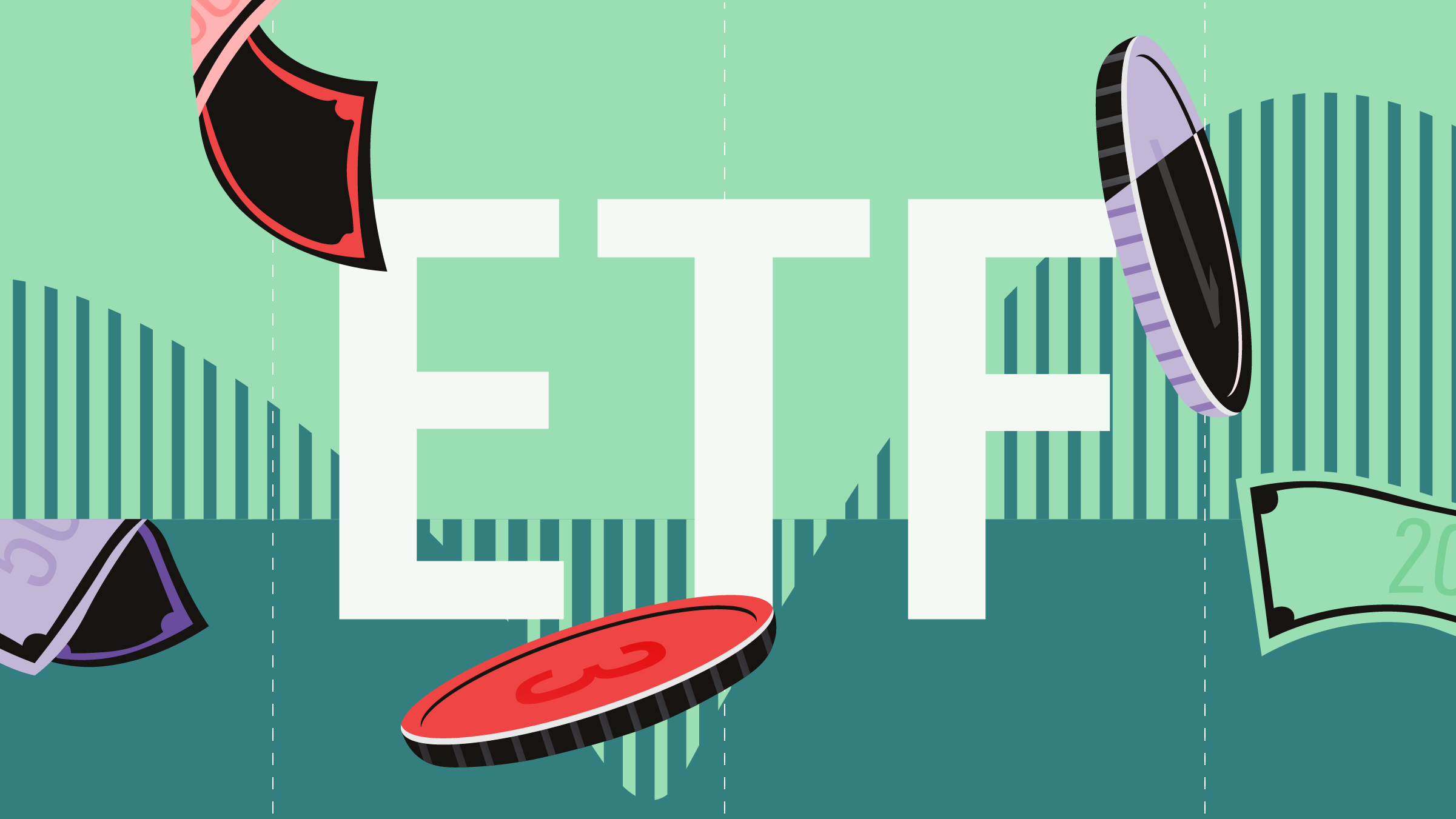Christian Charest: For Morningstar, I'm Christian Charest. The exchange-traded funds industry in Canada is about to close yet another record year in terms of sales. To talk about what's next for ETFs in 2018, I'm joined today by Alain Desbiens. He is vice president of sales at BMO ETFs.
Alain, thank you very much for being with us today.
Alain Desbiens: Always a pleasure.
Charest: So, the first trend I would like to talk about is not just the growing sales of ETFs but growing number of ETF sponsors and the sheer number of ETFs themselves. Is this a good thing for investors?
Desbiens: I think innovation and choice for the investors has been the catalyst of the growth of the ETF industry. Just to explain to you, in 2016, we went from 12 ETF providers to 18. This year, we went from 18 to 27 ETF providers. So, I think, it did help that more providers were speaking about exchange-traded funds across Canada to the three groups that buy ETFs, the institutional crowd, the portfolio managers/investment advisor crowd and also the investor crowd.
People don't realize this, but there are 125 mutual fund shops in Canada. There are 20% of those shops that offer ETFs and funds. What has been interesting also that we saw in terms of new entrants in the market is, it's not only the big mutual fund guys that went into the ETF market. There's boutiques, specialized, quite innovative that entered the ETF market in 2016 and 2017. What we saw though is some of those boutiques or some of those niche markets maybe didn't find their public. So, already we saw that Questrade and WisdomTree are now doing a new partnership. So, Wisdom is going to distribute and manage the Questrade ETFs. And we saw something similar with Sphere and with Evolve.
So, I think this is normal. We saw that in the business on the fund side. We saw this year the same thing for CI that bought a new mutual funds provider. So, this is normal course. So, I think maybe in the next two or three years we are going to go from maybe 25 to 30, 35-40 ETF providers. But I don't think we are going to see as many ETF providers in Canada as mutual funds providers. But I think the industry should welcome those new entrants because they bring something new to the market.
Charest: You said some of these companies haven't really found their market yet. Indeed, a lot of those new companies are very, very small in terms of assets. Is there a danger for investors to investing with a company like that?
Desbiens: That's a great question. Because each year on the ETF side and on the mutual fund side, mutual funds providers, ETF providers close exchange-traded funds or close mutual funds. And usually, they do it two ways. They usually merge it with another ETF or another mutual fund. Or they say that at X date they are going to give back the money to all the investors based on that. So, this is a normal process. There is no danger for the investors.
The only thing is, sometimes it's a bit annoying for some investors that plan to keep that ETF or that mutual fund for a lot of years. So, maybe sometimes they are cashing on that ETF at a time where they didn't want to cash in.
Charest: To stay on the topic of new funds, over the last several years we have seen a downward trend in ETF fees, particularly with cap-weighted index ETFs. With the addition of a lot of specialty mandates, are we seeing a reversal of that trend?
Desbiens: It's been interesting because when we saw at the beginning new providers coming -- BMO, iShares were there already with Horizon, we saw Vanguard after -- we saw really a benefit for both the investors, IAs and institutional on the, what I would call, the fixed income and the big equity index ETF, we saw the fees go down.
So, my take on it is, maybe not this year but at one point the influx of new providers, of new solutions, on the smart beta side, sector side, active side has not maybe yet transformed the industry in lowering the cost, but the impact is on the fund side. We saw already a lot of F class and a lot of mutual funds during the past two years reducing their fees. So, maybe you don't see it on the ETF level, but it has an impact on the mutual fund industry. But maybe at one point, there's gong to be a fee war on some smart beta shops. There's already a divergence in terms of fees with some of the providers.
What we know from the industry and I'm quoting there Dan Straus from National Bank Financial who did something great on this. 35% of the assets under management in Canada is below 25 basis points. This is the big fixed income ZAG or equity like ZCN or XIU. But in terms of numbers of ETFs, now we are at 600 in Canada; 30% of them have a fee over between 0.6 and 0.8 basis points and there's 15% to 20% of the ETFs of the industry that have a fee over 80 basis points. So, this is maybe the anomaly and maybe at one point we are going to see those fees go down.
Charest: One trend that's intrinsically beneficial for the ETF industry is that of financial literacy, which makes sense, because the more investors know about the options available to them, the more likely they are to pick the low-cost products. Are you expecting to see a lot of movement in that direction in 2018?
Desbiens: I think already since there is more competition in Canada -- I mean, we went from 12 providers to 18 in 2016, we saw now 18 to 27 providers. So, there's more people across Canada that speak to the institutional crowd, to the retail crowd, to the investor crowd about ETF and big players, like BMO, iShares, Vanguard, Horizon, Mackenzie. So, new big ones. And there's niche players that speak about it. But this is really the challenge. The ETF industry is new. We need to do the things differently, especially on the smart beta side and on the active side. We need to be transparent. We need to be able to communicate better the strategies.
Two things that BMO did quite well, I think, in the past two years is the BMO ETF dashboard. A lot of people can go there and find information about what an ETF is. But also, a booklet called "Understanding ETFs," the part two, which is all the explanation of all of our smart beta strategies, active strategies and index strategies. And this is where all the providers in Canada need to be -- but including us, all of us, we need to be better at communicating what we do in a simple way so that everyone from the institutional side, the retail side or the investors' side, can easily understand what we want to achieve and hopefully, the transparency of all the websites is there so that if they go on the website and have to read the methodology, they look under the hood inside of the ETF, they understand what they are buying. If we do this, we are going to see the industry, I think, explode.
Charest: Until recently one of the major obstacles to the ETF industry was regulatory roadblocks, with financial advisors who are licensed as mutual fund dealers not able to sell ETFs. Those obstacles have been coming down more and more over the past couple of years. Yet we are still not seeing a lot of MFDA advisors selling ETFs. Are you expecting that to finally change in 2018?
Desbiens: And maybe it's good for me to explain what's an MFDA versus IIROC. Because ETFs appeal to three groups, like I was saying, the institutional; the retail, usually the investment advisors, the portfolio managers that work under an IIROC umbrella. Those are the ones that are full service. Investors so far have bought a lot of ETFs also in Canada in the discount brokerage house.
But what we saw is a transformation on both the IIROC and on the MFDA in what we call the ETF strategist. So, what we've done in the industry is to build solutions under a mutual fund format where we package ETFs, and ETF strategists manage it based on different strategic ways, like income, balance, balanced growth, or they go more tactical like Larry Berman does on his Dividend Fund or SIA.
So, this is a big trend in the U.S., a big trend in Canada. The growth of the industry in those ETF portfolios managed tactically or strategically is growing fast. Now, we are at $12 billion, I think, in Canada. So, this is a big trend also to explain more the ETF market to both the investors, the IA on the MFDA side and on the IIROC. So, now, ETFs are offered more and more also under a mutual fund umbrella.
Charest: So, basically, they are being sold by mutual fund dealers packaged as a mutual fund, but the underlying holdings are a set of ETFs?
Desbiens: And the cost is really good for a lot of investors. Like, they can buy with some full-service brokers or also under the MFDA channel.
Charest: Interesting. Alain, thank you very much for explaining all this to us today.
Desbiens: Always a pleasure.
Charest: And we'll see you next year to see if any of this has come to pass.
Desbiens: Thank you.
Charest: For Morningstar, I'm Christina Charest. Thank you for watching.

















